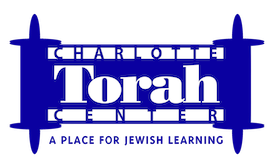| Rabbi O’s Weekly Parsha: Vayikra (Leviticus 1-5) And G-d called to Moses (Leviticus 1:1) If you drive by a construction site, you can’t help but notice that it looks more like an advertising billboard than a work in progress. A banner promoting Company A , who is doing the actual construction of the building, is outside. Next to it is a sign publicizing that Company B is the architectural firm that is responsible for the building. Every window proclaims that it is the product of Company C, and every beam, every fixture calls out the name of its manufacturer. While all this self-advertising may not create the most attractive view, it’s obvious why the companies involved want to advertise their services.Imagine a different scenario. A king contracted a construction company to build his palace. Upon completion, the king is taken on a grand tour and is thrilled with the magnificent architecture, well-endowed rooms, grand stairways, the impressive columns and much more, until he looks more closely and notices that every beam and fixture bears the name in large print of the individual who created that particular item. The king would be greatly disappointed that his royal palace was being used as a P.R. campaign to promote the products of services of the various countries. He would be incensed at the people who advertised themselves because the palace is for the glory of the king, not a venue to promote one’s products.The intricate tapestries and the general aesthetic of the Tabernacle presented an opportunity for the craftsmen to publicize their expertise. Millions of people would pass by and all would know that Alex Seamstress sews the most even stitches in the world or Corey Carpenter builds the sturdiest furniture ever created and so too with all the craftsmen. However, not only were there no logos adorning each piece in the Tabernacle, the Torah doesn’t even tell us who made what. The building of the Tabernacle was not meant to bring glory to the builders but to the One for Whom it was built. Every inch of wood, every yard of fabric used in the building of the Tabernacle had G-d’s name stamped on it, so that every beam and nail was clearly intended towards serving G-d. In so doing, Moses taught us that to build a sanctuary for G-d, we must have him in mind from the very beginning, and carry that through.We build many edifices throughout our lives. It is obvious that our synagogues must be built with G-d in mind – and so, too, our homes, which serve as our own small sanctuaries. Every Jew must ask him(her)self: did I include G-d in my sanctuary (home, work, personal life)? If so, how does my understanding of Judaism help me to maintain my sanctuary? If not, what is my sanctuary based on? What are its foundations? It behooves every thinking Jew to ask and brutally answer these questions. (Sources: Ksav Sofer (1815-1871), Rabbi Ami Neuman in Partners in Torah) |
| Our Standing Offer Interested in a one-on-one study? Got a Jewish question you want answered? Is there a specific topic you would like to hear more about? Please contact info@charlottetorahcenter.com and we will make that happen. Good Shabbos Rabbi Oppenheim Charlotte Torah Center |

